In the world of interior design, rugs have served as a key design element for centuries. Layering rugs introduces depth, texture and personality to any living space. A stylish and practical approach, it not only adds visual interest but also serves a functional purpose. The interplay of rug colors , patterns and materials empowers homeowners and renters alike to curate a unique ambience, elevating their home aesthetic and infusing personality into their space. The rug, with its texture and colour, can dictate the mood of the space. Let your rug speak volumes about your style and personality, making it a focal point that ties the entire room together harmoniously.
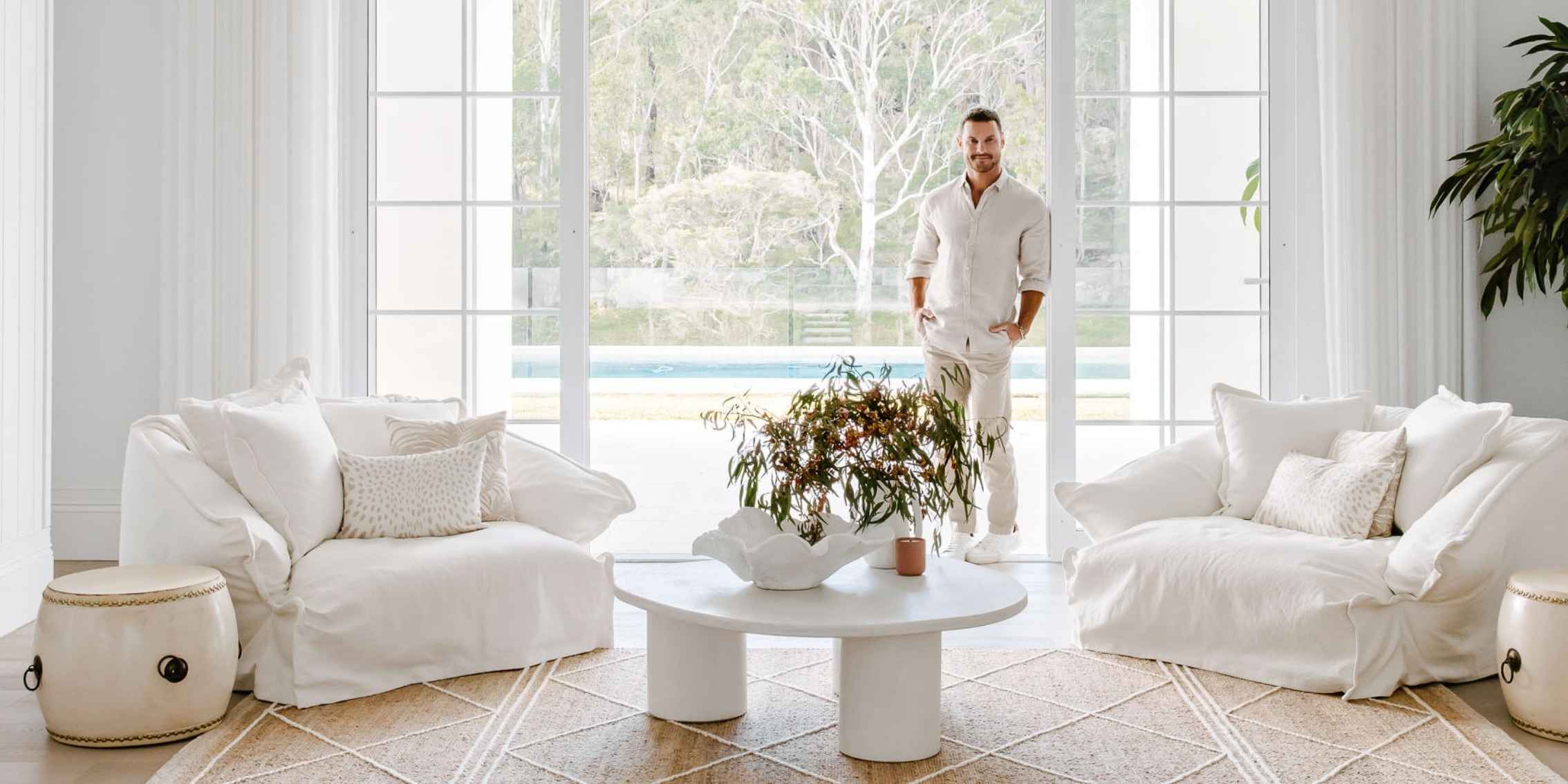
Image source: Unitex
A rug should complement the dimensions of the room to enhance its overall aesthetic and functionality. A larger room can accommodate an oversized rug allowing enough space for all of the furniture to sit comfortably on it and a smaller space can also benefit from a large rug beneath furniture to create the illusion of more space. In terms of shape, rectangular rugs are versatile and work well in most rooms whereas round rugs are able to soften the angles in a space. Runner rugs are ideal for narrow areas like hallways.
Next step, pay attention to color and pattern. A rug can either blend in with existing colors or serve as the focal point of the room. For a cohesive look, match the colors in your rug to soft furnishings such as cushions and other décor in your room. If the space has bold patterns already, choose a solid- colored rug to balance the visual impact. From making a statement to defining a zone, a rug is the ultimate style tool.
Lastly, don’t forget about texture. Different textures can add depth and visual interest to a room. Consider the material of the rug in relation to the overall feel of the space. It’s important to choose wisely by selecting the correct size, shape, color , pattern and texture. You can elevate the style of any room effortlessly.
When it comes to enhancing the appeal of your living space, a rug can be versatile and practical. Not only do rugs offer warmth but they can also serve as a focal point that encapsulates a space and complements surrounding design elements.
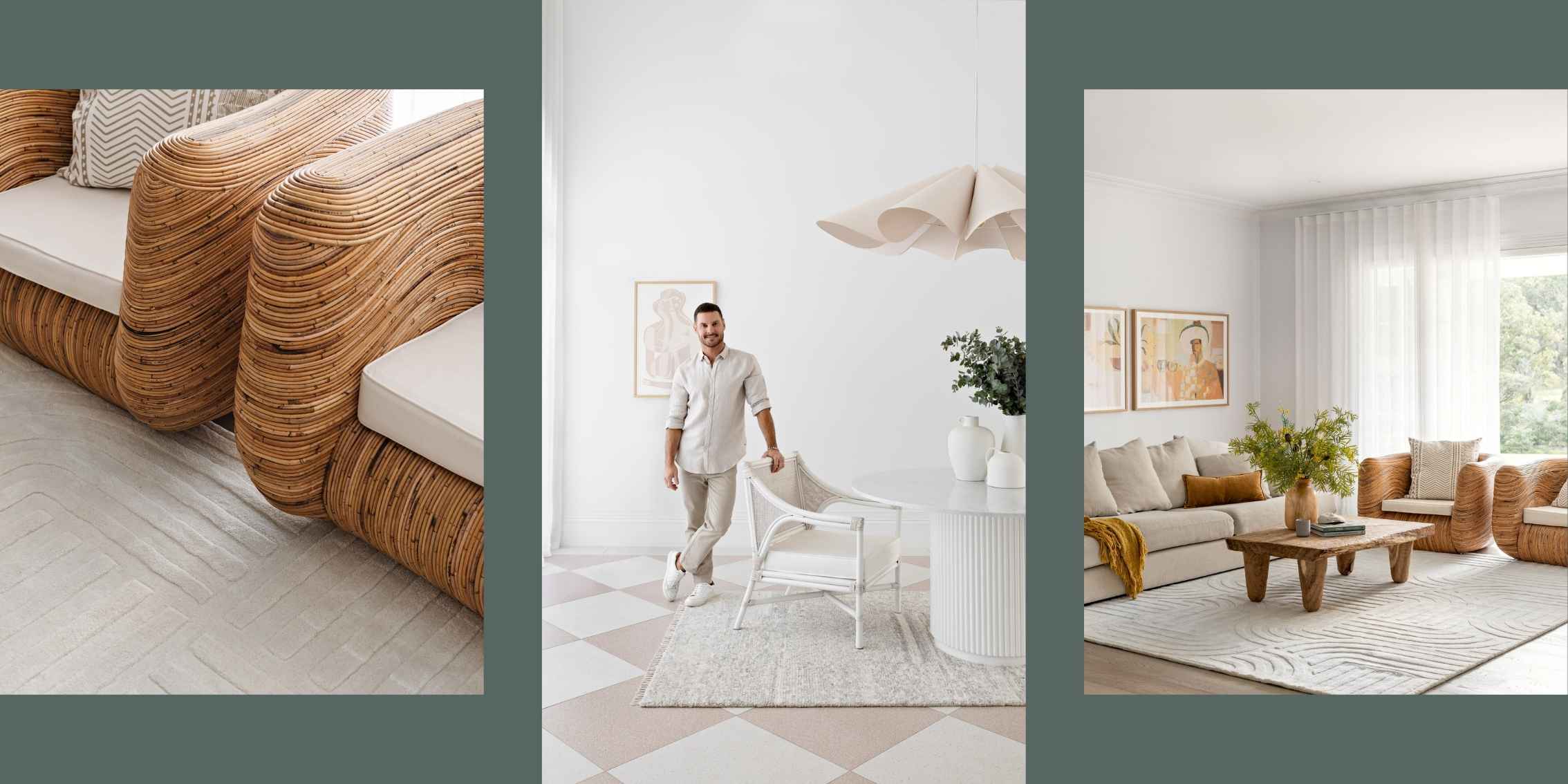
Image source: Unitex
Choose the right size rug for your space to avoid looking out of place. Selecting a rug that’s too small can make the room feel small, whilst opting for a larger size may create the illusion of more space. Select a rug that sits under your furniture and encapsulates the space.
The material of the rug plays a crucial role in its look and feel. Wool rugs are known for their softness and durability. For more eco-friendly options, consider materials like jute or cotton, however if you are looking for a touch of luxury, you may prefer silk or viscose rugs.
The color and pattern of your rug should complement your existing décor. A bold pattern or vibrant colors can add visual interest to a room with a neutral color palette while a more subdued rug can balance out a space with a bolder décor element.
To add texture and depth to your living area consider layering, especially over tiled or hardwood floors. Pair a patterned rug with a neutral base like jute or sisal to create a visually appealing layered effect.
Don’t shy away from mixing and matching different rug styles, materials and sizes to create a unique, personalized look.
When styling a rug for living spaces, color plays a significant role in setting the mood and tying the room together. It establishes the tone, guiding the overall aesthetics and ambience. Contrary to common perceptions, boldness in color doesn’t solely equate to vibrant neon shades, it can emanate just as strongly through grand jewel tones or deep grounding neutrals.

Image source: Unitex
Darker coloured rugs such as navy blue, chocolate brown or deep red can add depth and create a cosy atmosphere in a larger living room with higher ceilings.
A rug with a bold, contrasting color can act as a focal point in a room with neutral coloured furniture, drawing the eye and adding a pop of visual interest.
Light colored rugs such as cream, beige or soft pastels can make a small living space appear larger and more open by reflecting light and creating an illusion of space.
Colors such as blue and green can evoke a sense of calm and tranquillity. Perfect for creating a relaxing atmosphere.
Vibrant colors such as yellow, orange and bright pink can inject energy and liveliness into a room, making it ideal for spaces where creativity and social interactions are encouraged.
A conscious selection of colors is essential to ensure they align with the intended mood of the room, factoring in the warmth or coolness they convey and how they interplay with other design elements. When aiming for sophistication, black & white represents a classic standard, combining various shades of gray or pairing saturated hues with pastels can yield equally captivating results.
While bold design choices inject personality, it’s essential to balance them with softer, neutral components to prevent overwhelming a room. Establishing a focal point and infusing the space with elements that invite restful visual pauses to create a harmonious composition. By embracing bold patterns, colors and contrast judiciously, one can achieve stunning transformations in your living space. Implementing these strategies empowers individuals to navigate the realm of colors confidently and creatively, resulting in interiors that are not only aesthetically pleasing but also reflect your personal style, defining your living space.
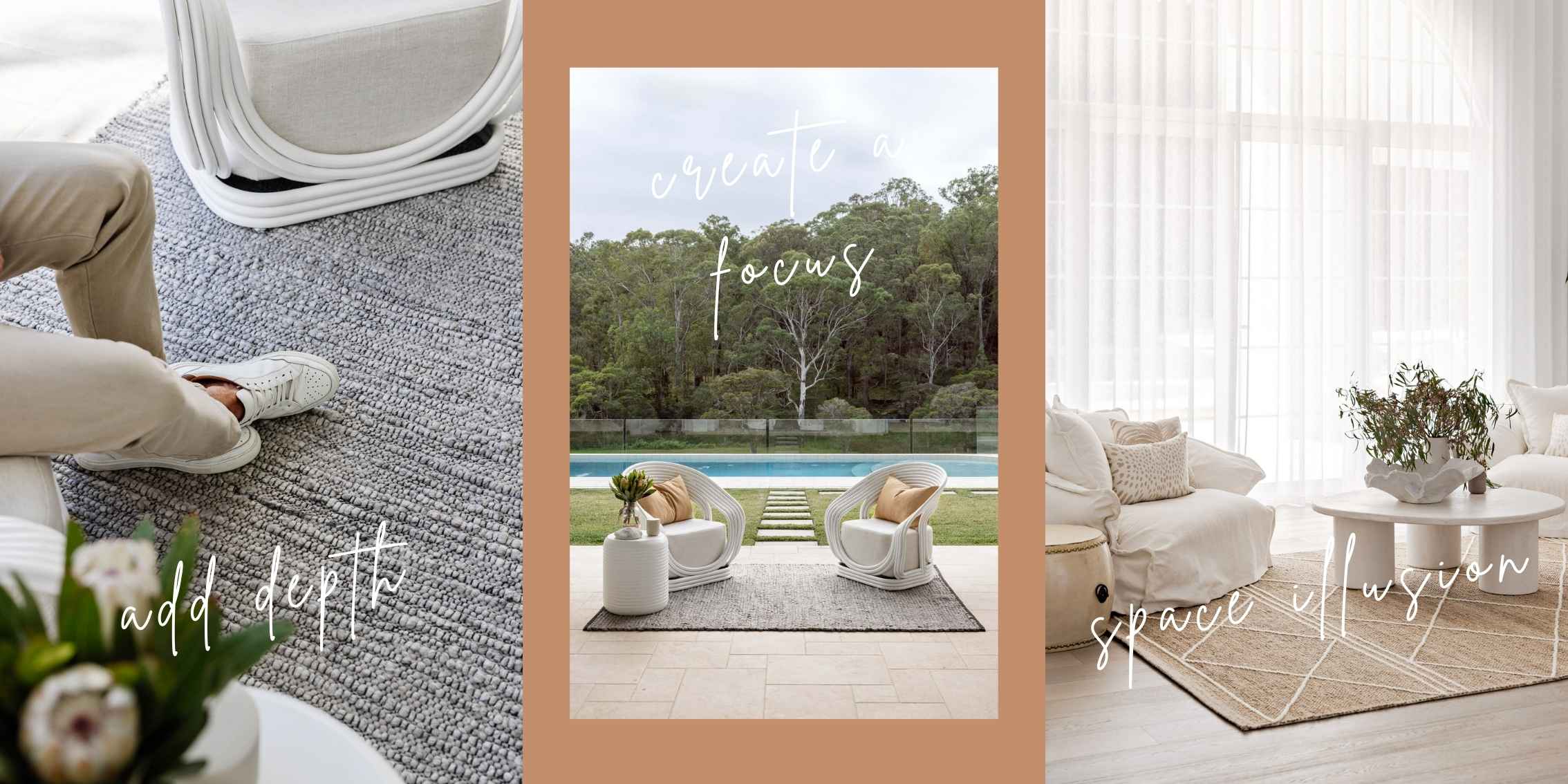
Image source: Unitex

Image source: Unitex
I always start with a written brief. It can be a formalized document or an email correspondence, but it’s something that defines the constraints of the project and design approach. This outlines desires, outcomes, timelines and budget as well as more ethereal things like mood and feeling.
I then look for a mix of visual reference and real life available products that fit my brief and visual intention. I’ll save those into a big pinterest board (set to private) and then edit anything that isn’t working out of the board.
I’ll then check the measurements of every inclusion making sure they fit on a to-scale (preferably a scale like 1:10 or 1:100) so that I can order with confidence, then I order with confidence.
I don’t start with any one thing generally, more that I lock in the thing that is either pivotal to the design, hardest to source, has the longest lead time and/or is the thing with the least amount of customization. An example of that would be choosing natural stone first and paint color well afterwards, as you can customize paint to suit stone but suiting stone to paint is less likely and adaptable.
I make sure the pieces I include are fit for purpose and provide the correct amount of amenities. I like aesthetically beautiful things, of course, but if it doesn’t function and make the best use of the available space, then I won’t include it.
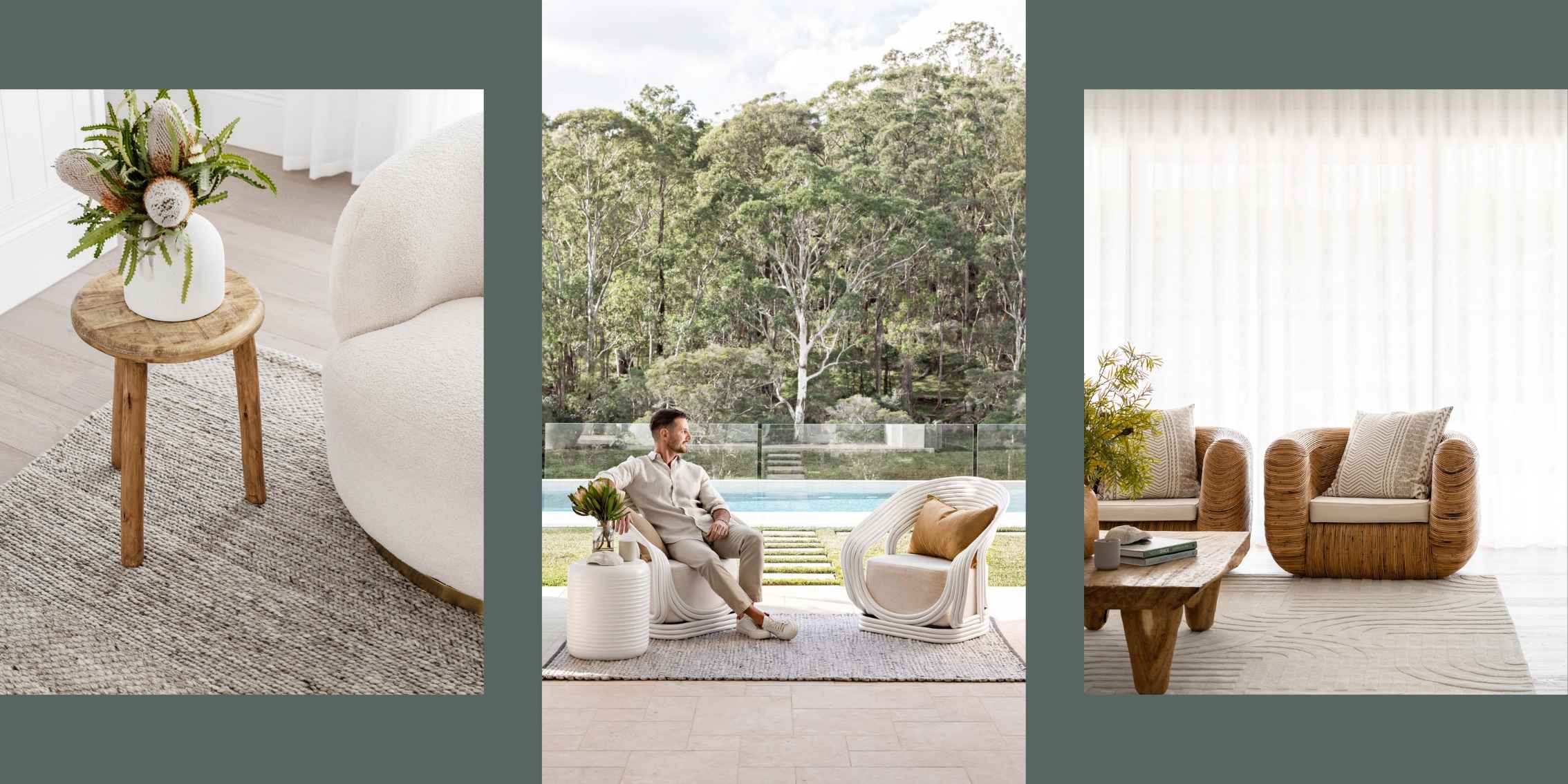
Image source: Unitex
It’s a skill of interpretation and empathy. You need to be able to listen for cues to what is important to the client, their language and emphasis on things often giving strong indications. You can get a sense of what drives the client, whether they’re value focused, luxury focused, brand focused or whatever blend of the above. It’s a matter of pragmatically and systematically working through a checklist of requirements, inclusions, dos, don’ts, must have and must nots, all the while also having an intuition about the person, their goal, desires and outcomes.
Warm neutrals, browns and tan are in vogue at the moment and the Darren Palmer Rug Collection has a spectrum of options, textures and patterns to suit the warm toned direction du jour. The rugs are contemporary so will fit into modern Mediterranean, coastal, modern farmhouse and most currently trending styles as well as long standing classic ones.
Most people buy rugs that are too small and they look like your furniture is sitting on a shrinking iceberg. The rule is feet on the rug at least and at best, sit your full furniture arrangement partially or fully on the rugs. If you’re putting a rug under a dining table make sure it has a flat texture, is easy to clean and has enough room for you to pull a chair fully out without it coming off the rug. This is an aesthetic and safety recommendation.
Rug maintenance will provide the best use and longest life for your rugs so is a wise consideration. Spot cleaning by removing debris without massaging it into fibers is the place to start. Then soak up any moisture until your cloth or paper towel is not easily picking up more moisture. Then spot clean with diluted soap and water or an appropriately recommended and tested product. Lastly make sure your cleaning dries properly by lifting it off the ground to allow airflow on both upper and undersides. Having your rugs professionally cleaned once or twice a year will make them as fresh and long lastingly beautiful as possible.
Ultimately, a well-styled rug can make a statement, define zones and elevate the style of any room. When choosing colors and patterns, consider whether the rug should blend in or stand out in the room. Matching the dominant color in the room or choosing a solid- colored rug can promote cohesion and balance. Rugs are not only versatile but also practical additions to any living space, providing warmth, comfort and serving as a focal point that ties everything together with various design elements seamlessly.
To explore the Darren Palmer Rug Collection, please visit the Unitex website over at unitexint.com and enquire about their trade program.
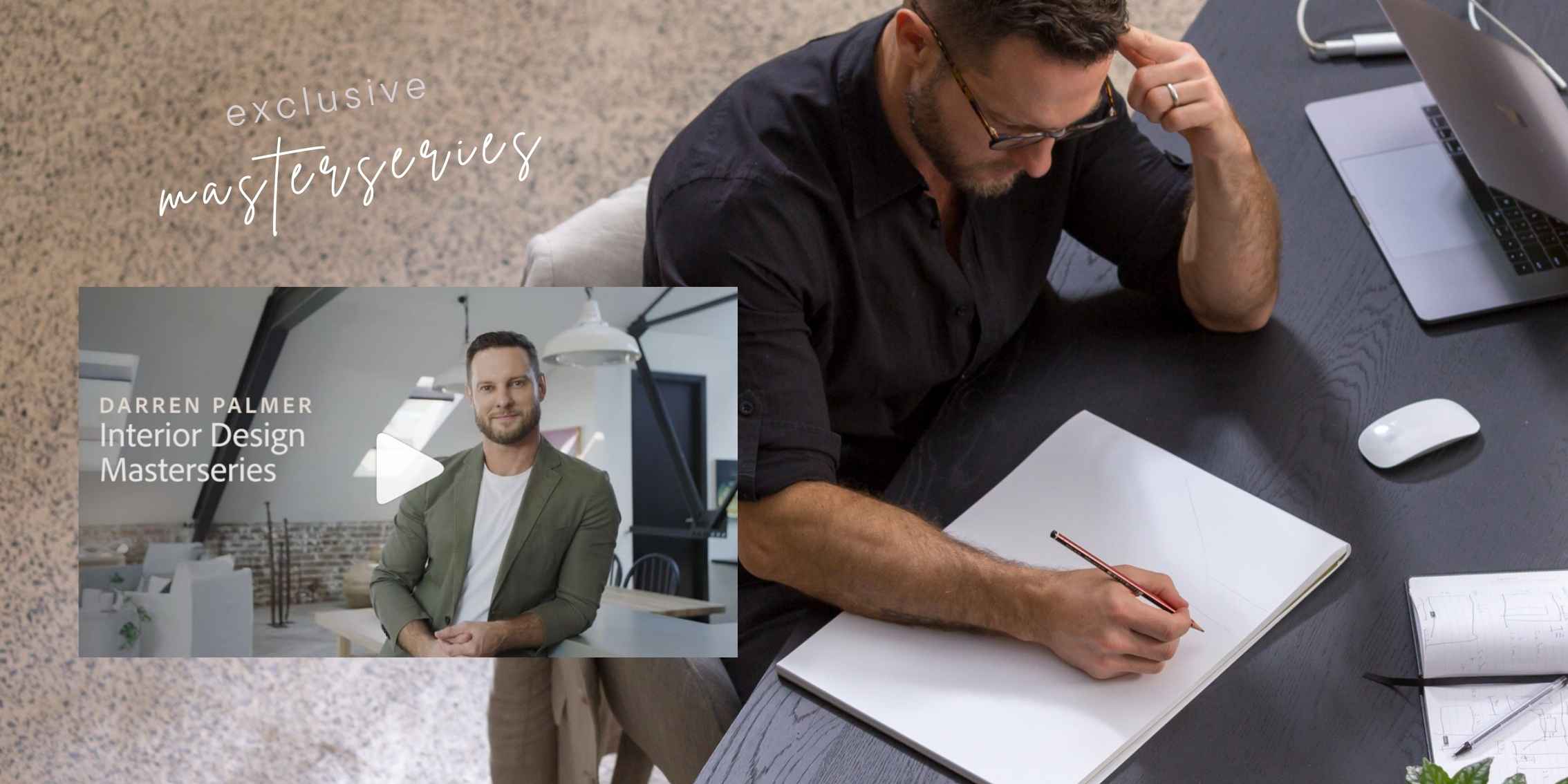
Image source: The Interior Design Institute
Interested in studying our video Masterseries with Darren Palmer? We've created a series of videos meticulously designed to complement our online Interior Design course. The videos delve into the essential principles and techniques for success in the field, covering everything from space planning and {colour|color} theory to lighting, furniture selection, and styling tips. Plus, there's a bonus Q&A session at the end. For more info on the Darren Palmer Masterseries, click here.
This post was created in partnership with Unitex and Darren Palmer.